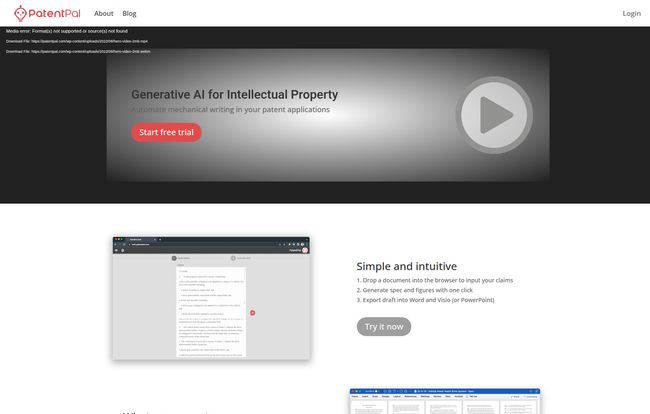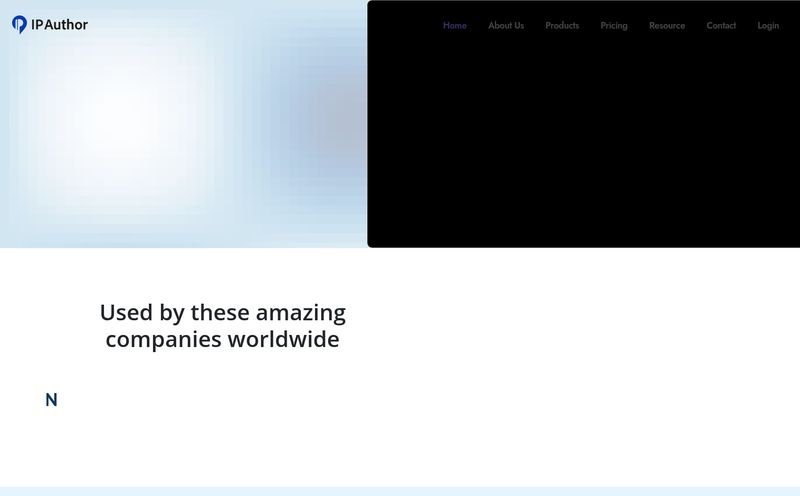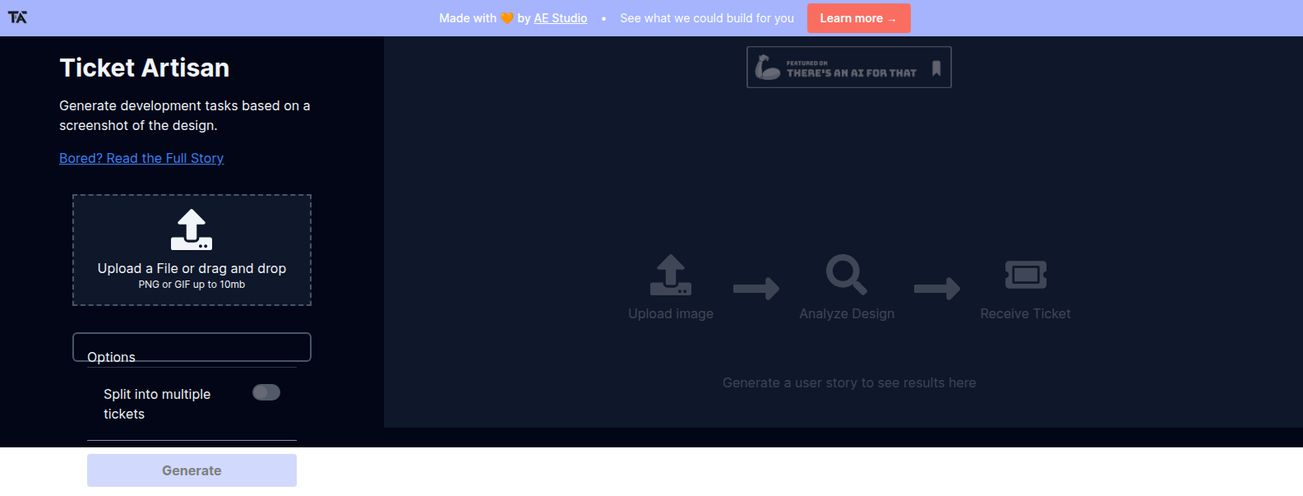If you've ever been near the world of intellectual property, you know that patent drafting is... a process. A long, meticulous, and often repetitive process. I have a friend who’s a patent agent, and the stories he tells over a beer about drafting specifications could make a statue weep. The hours spent on what is essentially boilerplate language, the tedious creation of block diagrams—it’s the necessary grunt work that stands between a brilliant idea and a protected invention.
For years, we’ve been promised that technology would save us. And now, generative AI is the hot new superhero on the block, vowing to slay the dragon of tedious tasks. Enter PatentPal, a tool that claims to automate the “mechanical writing” in patent applications. But as someone who's seen a lot of tech fads come and go in the SEO world, I’ve learned to be a healthy skeptic. Is this the real deal? Or just another shiny object?
I decided to take a look under the hood. No marketing fluff, just a straight-up analysis of what this thing actually does.
So, What Exactly is PatentPal?
At its core, PatentPal is a generative AI platform built specifically for IP professionals. Think of it less as a creative genius and more as a hyper-efficient, highly-trained paralegal who’s had way too much coffee. You feed it the most critical part of your application—the claims—and it gets to work building out the rest of the scaffolding.

Visit PatentPal
According to their site, it generates the full specification draft, flowcharts, block diagrams for systems, detailed figure descriptions, and even the abstract. Essentially, it tackles all the parts that, while crucial, can feel like you’re writing the same thing for the hundredth time. The goal isn't to replace the attorney's brain, but to free it up to focus on the high-level strategy and the nuanced legal arguments that an AI, at least for now, can't handle.
The Core Features: How It Gets the Job Done
The workflow PatentPal presents seems refreshingly simple, which is always a good sign. There's nothing worse than a “time-saving” tool with a learning curve steeper than Everest. Here's how it seems to break down.
A Simple Drag-and-Drop Workflow
It starts with your claims. You drop a document containing your carefully crafted claims into the browser. This is the seed from which the entire application will grow. It's a smart approach; the claims are the legal heart of a patent, and everything else is there to support them. So far, so good.
One-Click Generation Magic
This is the main event. After you input your claims, you hit a button and PatentPal generates the draft. The whole thing. It spits out text and even figures. On the surface, this sounds like pure witchcraft. The ability to instantly create flowcharts and block diagrams that correspond to the claims is a huge time-saver. Anyone who has wrestled with Visio or PowerPoint to get boxes to line up knows the pain.
Speaking Your Language (Literally)
Now this, I think, is a genuinely clever feature. PatentPal allows you to create customizable language profiles. Every law firm has its own style, its own preferred phrasing, its own little quirks. Being able to teach the AI to write in your firm's voice is a massive plus. It means less time spent editing the output to match your style guide and more time spent on substantive review. You can even have multiple profiles, which is great for attorneys who work with different clients with different requirements.
Exporting Without Headaches
Finally, once the AI has done its thing, you can export the drafts into the holy trinity of legal documents: Word, Visio, and PowerPoint. This is non-negotiable. A tool that traps your work in a proprietary format is a non-starter. Compatibility is king, and it seems they understand that.
The Good, The Bad, and The AI-Generated
No tool is perfect. As an SEO, I know that for every brilliant algorithm, there's a potential pitfall. Let's weigh the pros and cons.
The Good (The Time-Saver): The biggest win here is clearly speed. Automating the generation of a first draft, complete with figures, could shave hours, if not days, off the patent application process. This frees up expensive human brainpower to focus on what matters: claim strategy, prior art analysis, and client communication. Its a game-changer for productivity.
The Bad (The “Human-in-the-Loop” Problem): Let's be blunt. You can't just press 'generate' and file the result with the USPTO. The company itself notes that the output requires careful review. This is the classic AI dilemma: it’s a powerful tool, but not an infallible one. The quality of the generated text is entirely dependent on the quality of the input claims. It’s the old “Garbage In, Garbage Out” principle. An ambiguous or poorly written claim will likely result in a confusing and weak specification. You still need an expert at the helm.
The AI-Generated (A Question of Insight): The other concern is a bit more philosophical but no less important. Does relying on AI for the descriptive parts reduce the depth of human insight? Sometimes, in the act of methodically describing a system, an inventor or attorney uncovers a new angle, a different embodiment, or a potential flaw. By outsourcing this “mechanical” work, are we missing opportunities for deeper understanding? I think that’s a valid question, and the answer probably depends on the team's workflow.
Let's Talk Money: The PatentPal Pricing Mystery
Here's the elephant in the room. I scoured the website, and there's no pricing page. I even found a broken page that returned “No Results Found,” which made me chuckle. Happens to the best of us. They push a “Start free trial,” but what happens after that is anyone’s guess.
In my experience, when a B2B SaaS company hides its pricing, it usually means one of two things: it’s very expensive (think enterprise-level contracts), or the pricing is flexible and they want to get you on a sales call. I'd love to see more transparency here. For a solo practitioner or a small firm, knowing the cost upfront is critical. This ambiguity is a small but noticeable mark against them.
My Final Take: Who is PatentPal Really For?
After looking at everything, I have a pretty clear picture. PatentPal isn’t a magic wand to create perfect, file-ready patents out of thin air.
I see this as a power tool for the experienced professional. It's for the busy patent attorney at a large firm, the in-house IP counsel juggling dozens of disclosures, or the high-volume patent agent who knows their craft inside and out. For them, PatentPal could be an incredible assistant, handling the low-level tasks with speed and letting them focus on high-value work. It’s a tool to augment expertise, not replace it.
Think of it this way: you wouldn’t hand a nail gun to someone who's never built a house and expect a masterpiece. But for a skilled carpenter, that nail gun is a force multiplier. That's what PatentPal seems to be—a force multiplier for people who already know exactly what they're doing.
Ultimately, the rise of tools like PatentPal is a fascinating development in the legal tech space. They present a powerful opportunity to boost efficiency, but they also come with a responsibility to maintain rigorous human oversight. It's a promising step forward, but as always, the professionals using the tools are the ones who make all the difference.
Frequently Asked Questions about PatentPal
- What is PatentPal?
- PatentPal is a generative AI software designed for intellectual property professionals. It helps automate the writing of patent applications by generating specification drafts, figures, diagrams, and abstracts based on user-provided claims.
- How does PatentPal generate patent applications?
- Users upload or input their patent claims, and the AI tool then generates a supporting draft of the application, including detailed descriptions and visual aids like flowcharts and block diagrams.
- Can I customize the output from PatentPal?
- Yes, one of its key features is the ability to create custom language profiles. This allows you to tailor the generated text to match a specific firm's style guide or a client's preferences.
- Is PatentPal's output ready to file with a patent office?
- No. The generated draft is intended as a starting point and requires careful review, editing, and legal analysis by a qualified patent professional to ensure accuracy, completeness, and legal soundness before filing.
- How much does PatentPal cost?
- The pricing for PatentPal is not publicly listed on their website. They offer a free trial, and you would likely need to contact their sales team for specific subscription or licensing costs.
- What formats can I export my work to?
- You can export the generated drafts and figures to standard formats including Microsoft Word, Visio, and PowerPoint for further editing and integration into your workflow.
Reference and Sources
- PatentPal Official Website
- AI and IP: a perfect match? - WIPO Magazine (for general context on AI in intellectual property)



